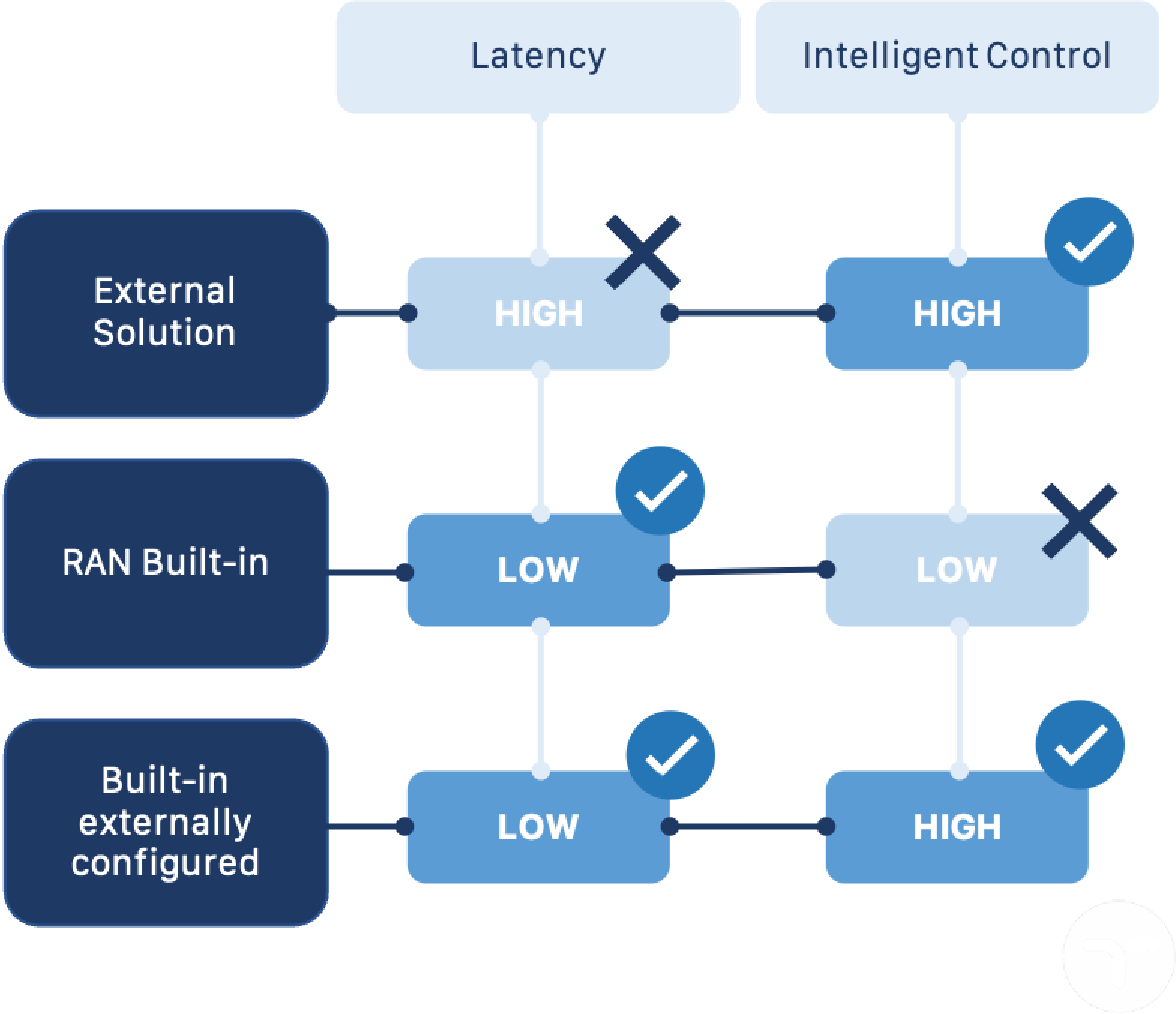The Energy Savings Imperative
for Mobile Networks
The strategy to achieve more energy savings and better network performance and customer experience should balance performance of these two elements. Out of the several approaches one could take to energy savings in network operations, we affirm that the best strategy is a RAN built-in configured by a non-real time external solution. In this solution there are two main sub-processes involved: OEMs’ power saving features and an external system that continuously configures them in a cyclic, non-real-time manner.

Figure 2: Outer loop control
On the one hand, the PSFs ensure rapid execution of the observation-reaction cycle. This would be an inner-loop control.
On the other hand, the non-real time external system configures those radio features in such a way that the power savings are maximized in each network element, maintaining the user experience. This would be an outer-loop control.
There are examples of operators that are already implementing this approach, such as Kyivstar in Ukraine. Kyivstar was looking for a power-saving solution that could guarantee no impact on the customer experience, but also provide a transparent system in which engineers could verify the AI-based decisions—a system to provide anomaly detection on any deviations on KPIs and customer experience, and automatic actuation scripts for activation and deactivation of the power-saving features. Last, but not least, the solution needed to be able to operate in their multi-vendor and multi-technology environment. After applying AI to automate PSFs, the hourly shape of the energy consumption decreased by more than 15 percent compared to the baseline for Kyivstar.
Clearly, the telecommunications industry is starting to consider energy efficiency more seriously and is taking steps to reduce the impact of high energy consumption, such as using renewable energy sources. Undoubtedly, artificial intelligence is and will be the key technology enabling power savings. The AI-driven software approach will be the catalyst of the fundamental change in this domain, ensuring control and reduction of energy consumption. All this needs to happen without impacting the customer experience.
It is already possible today to achieve this with proven technology: AI-based solutions are available on the market for immediate implementation. Every month that passes is a lost opportunity to serve the planet and serve the shareholders of the MNOs.



















